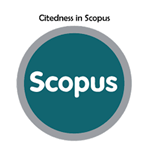Formulation of Antibacterial Solid Soap Containing Miana Leaf Extract Against Staphylococcus aureus Bacteria
Abstract
Keywords
Full Text:
PDFReferences
N. Khasanah and E. D. D. Rianti, “Effect of propolis concentration on the antibacterial activity against Staphylococcus aureus,” Proc. Natl. Seminar COSMIC, vol. 2, no. 1, pp. 198–204, 2024. [Online]. Available: https://doi.org/10.36456/cosmic.vol2.no1.a7988
K. Nisyak, A. Hisbiyah, and A. Haqqo, “Antibacterial activity of ethanol extract and essential oil of green betel leaves against Methicillin-Resistant Staphylococcus aureus (MRSA),” J. Pharmaceutical Care Anwar Medika, vol. 5, no. 1, pp. 1–14, 2022. [Online]. Available: http://dx.doi.org/10.36932/jpcam.v5i1.82
N. Auliah, N. Bachri, M. Asri SR, and Nurfatma, “Formulation development of miana leaf (Coleus scutellarioides) hexane fraction emulgel as antibacterial against Propionibacterium acnes,” Indonesian Pharmaceutical Research Journal, vol. 6, no. 1, 2024. [Online]. Available: https://doi.org/10.33759/jrki.v6i1.431
R. Ahmad, V. Handayani, A. Malik, Ririn, H. Wdiastuti, and M. Mamas, Potential Medicinal Plants. Makassar: Nas Media Pustaka, 2021. [Online]. Available: https://repository.unhas.ac.id/handle/123456789/28420
M. F. Raihan, F. G. A. Putra, and R. Arifianto, “Accuracy analysis in diagnosing contagious skin diseases using the Certainty Factor method,” J. Informatics and Software Engineering, vol. 4, no. 1, pp. 304–310, 2023. [Online]. Available: https://doi.org/10.33365/jatika.v4i3.3562
E. Mega, Easy Guide to Making Soap. Yogyakarta: Andi Publisher, 2024. [Online]. Available: https://andipublisher.com/produk/panduan-mudah-membuat-sabun/
M. T. A. Nugraha, Arviani, and L. Haanifah, “Antibacterial activity test of miana (Coleus atropurpureus L.) ethanol extract against Staphylococcus epidermidis FNCC 0048 and Escherichia coli FNCC 0091,” J. Health Sciences, vol. 15, no. 2, 2022. [Online]. Available: https://doi.org/10.24252/kesehatan.v15i1.27103
A. K. Waardani, S. Malfadinata, and Y. Fitriana, “Antibacterial activity test of ashitaba (Angelica keiskei) leaf extract against acne-causing Staphylococcus epidermidis,” Lumbung Farmasi: J. Pharmaceutical Sciences, vol. 1, no. 1, p. 14, 2020. [Online]. Available: https://doi.org/10.31764/lf.v1i1.1206
A. Rumini, D. Hadi, and A. Nikmati, “Phytochemical screening of the Piperaceae family,” J. Biology and Learning, vol. 7, no. 1, pp. 28–32, 2020. [Online]. Available: https://doi.org/10.29407/jbp.v7i1.14805
J. Supriyanta, N. Rusdiana, and P. D. Kumala, “Formulation of transparent solid soap with kaffir lime leaf essential oil (Citrus amblycarpa (Hassk) Ochse) as antibacterial against Staphylococcus aureus,” J. Farmagazine, vol. 7, no. 1, 2021. [Online]. Available: http://dx.doi.org/10.47653/farm.v8i1.527
Z. Fanani, V. Rosvita, N. Aisah, N. D. Pamungkaas, and I. Fadillah, “Formulation of solid bath soap containing avocado peel extract (Persea americana Mill.),” Cerata: J. Pharmaceutical Sciences, vol. 12, no. 2, pp. 21–26, 2021. [Online]. Available: https://doi.org/10.61902/cerata.v12i2.224
Y. Zalfiatri, F. Hamzah, and M. T. Simbolon, “Production of transparent soap with papaya stem extract as antibacterial agent,” Chempublish J., vol. 3, no. 2, pp. 57–68, 2018. [Online]. Available: https://doi.org/10.22437/chp.v3i2.5713
N. B. Situmorang, D. M. Marpaung, Aminah, and R. A. T. Marbun, “Effectiveness of solid soap formulation containing ethanol extract of starfruit leaves (Averrhoa bilimbi) as skin moisturizer,” J. Farmasimed, vol. 2, no. 2, pp. 50–55, 2020. [Online]. Available: https://doi.org/10.35451/jfm.v2i2.360
R. Tungadi, Madania, and B. H. Aini, “Formulation and evaluation of transparent solid soap from roselle flower extract (Hibiscus sabdariffa L.),” Indonesian J. Pharmaceutical Education, vol. 2, no. 2, pp. 117–124, 2022. [Online]. Available: https://doi.org/10.37311/ijpe.v2i2.14060
N. P. J. Jaya, D. P. K. Wardani, I. Mujahid, and M. L. Almanfaluthi, “Identification of intestinal parasites in spinach at Padamara Market, Padamara District,” Int. Islamic Med. J., vol. 6, no. 1, pp. 1–9, 2024. [Online]. Available: https://doi.org/10.33086/iimj.v6i1.5531
A. E. Wiyono, I. C. Rani, C. Miftahul, A. Setiawan, and A. D. Massahid, “Kinetics of quality changes in transparent solid soap made from papaya leaf extract (Carica papaya L.),” J. Industrial Engineering, vol. 13, no. 1, pp. 35–44, 2023. [Online]. Available: https://doi.org/10.25105/jti.v13i1.17512
DOI: https://doi.org/10.37311/ijpe.v5i2.31146
Refbacks
- There are currently no refbacks.
Copyright (c) 2025 Asti Vebriyanti Asjur, Elvira Santi, Wahyu Nuraini Hasmar, Tamzil Azizi Musdar, Syaifullah Saputro, Mifta Khaerati Ihsan, Nur Aulia Riski

Indonesian Journal of Pharmaceutical Education is licensed under a Creative Commons Attribution-NonCommercial-ShareAlike 4.0 International License.




